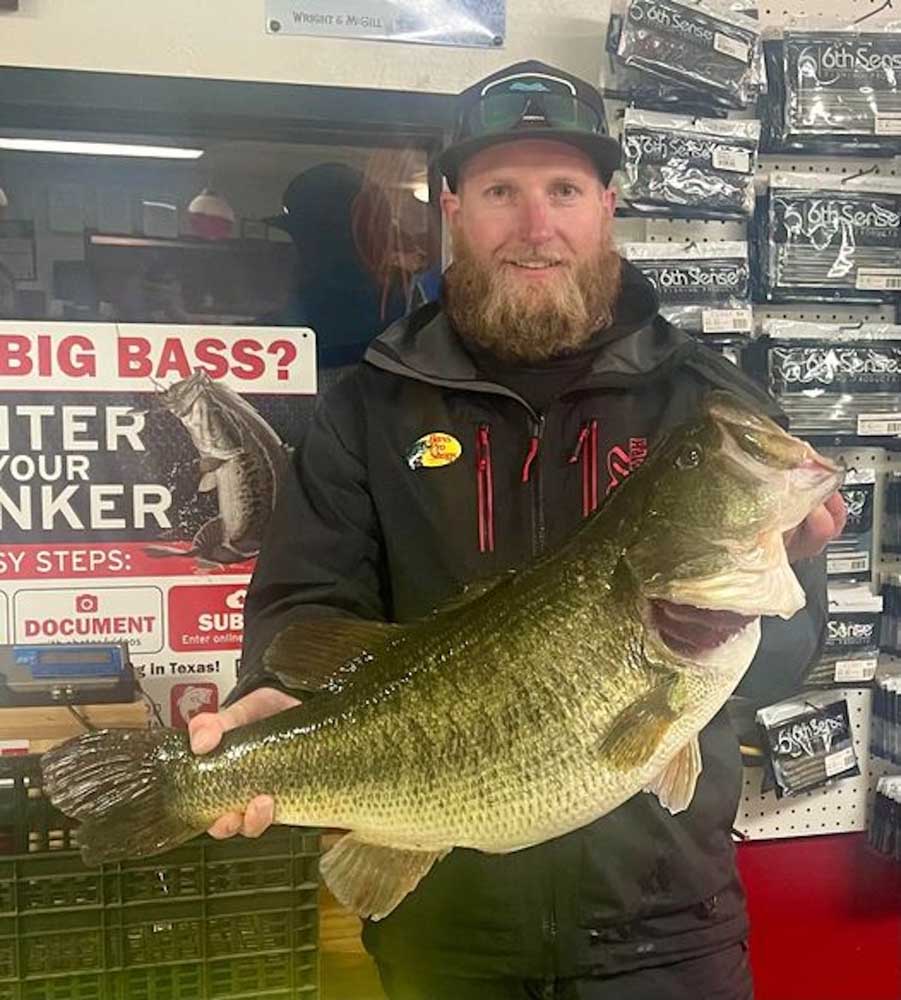Red Hot: O.H. Ivie continues streak with four January shareLunkers
Published 3:10 pm Thursday, February 3, 2022

- After producing 12 Toyota ShareLunker Legacy class bass last year, O.H. Ivie has produced five in January. Brady Standford has caught the largest this year with a 15.02 Jan. 23.
The King is dead. Long live the King.
Not really, but in this era of hot-take headlines it sounds good.
With a total of 263 Toyota ShareLunkers since the program started in 1986, Lake Fork is still the king of big bass fishing in Texas. However, while it only has 43 overall, O.H. Ivie produced 12 last season to Fork’s two, and had five in January this year. Lake Fork is waiting on its first entry of 2022.
The latest Ivie trophy was a 13.37 that came Jan. 27. That was preceded by a 14.13, 14.92, a 14.48 and a 15.1.
“I think it is a combination of things over there,” said Lynn Wright, Texas Parks and Wildlife Department Fisheries district biologist for the lake. “It had a huge rise in 2018. It was down to like 5,000 acres and then went to 15,000 so it added 10,000 acres of space, terrestrial habitat.”
He explained that the lake’s first big bass boom came in 2010. At that time the lake’s level remained more stabile at about 10,000 acres, and during that period it contained a lot of hydrilla. The drops, and more importantly the rises that have come since, continually produce a new lake affect — bringing in fresh nutrients and habitat for the fish.
With the drought-induced drawdowns being a relatively common occurrence on the western Texas lake, TPWD makes an effort to replenish its bass fishery on the rise. Between 2010 and 2018, the lake was stocked with more than a million Florida bass fingerlings.
The 19,000-acre lake is on another one of its drops, and currently sits at about 54 percent full or 10,300 acres. During extended periods of low water, brush grows well into the lake’s footprint only to be covered once it refills. This provides the fish with excellent cover, and increases fingerling survival after periods of low natural production in the lake.
Wright said recent sampling on the lake shows that Florida bass genetics are found in about 75 to 80 percent of the fish. That tops the 50-60 percent found at Lake Fork.
“That puts it in the right place to grow those trophy fish,” Wright said.
But each drop congregates the bass into smaller areas.
Ivie is what Wright describes as a canyon-like reservoir, which puts the fish in deeper water. That has led to another important ingredient in the big bass surge. About that same time the lake recharged in 2018 live sonar hit the market, giving fishermen a new tool to at least locate trophy bass if not catch them.
“Along with the rise, there has been an improvement in the use of new technology. They are able to find the fish deeper in places,” Wright said.
He added last winter the ShareLunkers were found with live scan in deep spots just below the brush.
“There were a lot caught early last year hanging on the edge where brush stops, just hanging off edge. They find them where they hadn’t thought to look or didn’t look. I think Livescope helps to find them in deeper water,” Wright said.
It used to be said that a lake held only so many of these big fish, but no one knew how many that was. Ivie is showing it could be more than thought. There were eight ShareLunkers returned from the Texas Freshwater Fisheries Center in Athens last year with identifying electronic tags. Of the four ShareLunkers already caught in 2022, none were tagged.
But another modern invention, social media, might play a role in how long the lake continues to produce. While it has been good for lakeside businesses, word of the January hot streak is rapidly attracting fishermen from around the country searching for the next trophy.
As it has at Lake Fork, that added pressure could make fishing more difficult by make the fish more wary. Still, this year’s quick start is better than last year. In 2021, the first Ivie ShareLunker did not come until mid-February after the big freeze and the last came on March 23.
“We are kind of in uncharted waters for this type of year. But we have had good years before. In 2010 we had 11, and then six the next year and then two,” Wright said.
Depending on the water temperature, Ivie’s spawn generally kicks off in late March and can run into May. That along with the ShareLunker’s April 1 deadline for Legacy entries will be a big part of how long the trophy run lasts this year.
So while Ivie still has a long way to go to catch up to Fork’s overall total, there is no doubt it is currently the state’s hottest big bass lake for a number of reasons.






